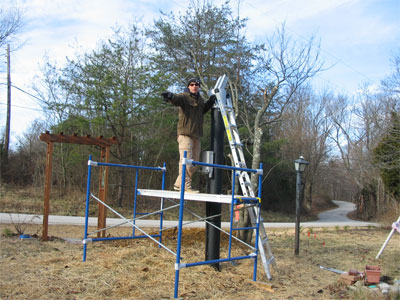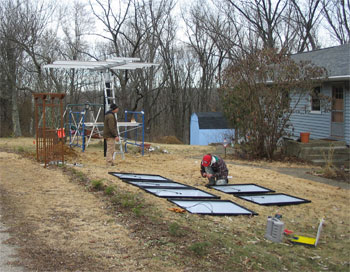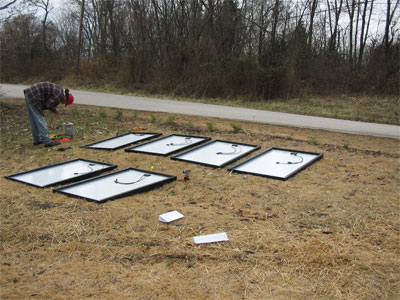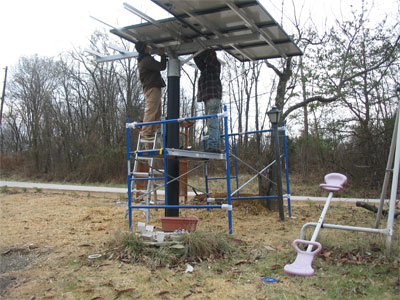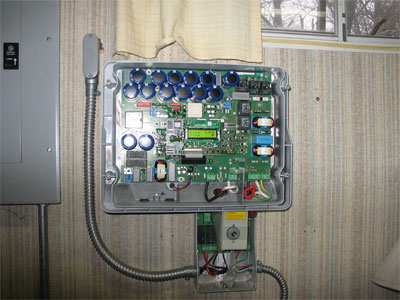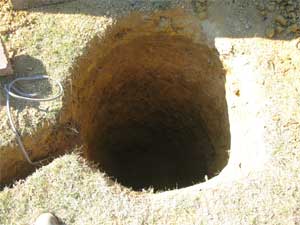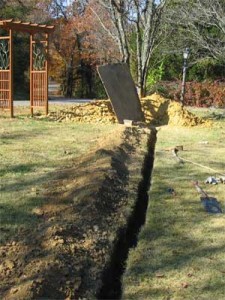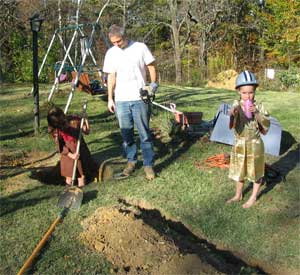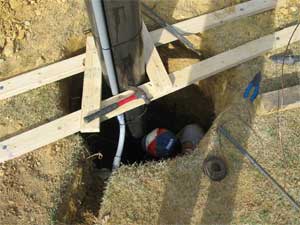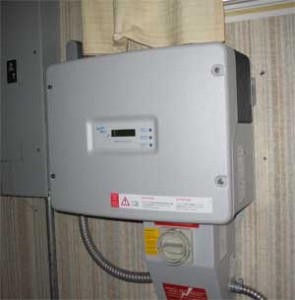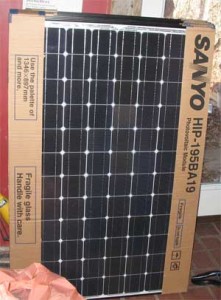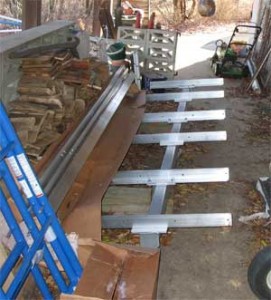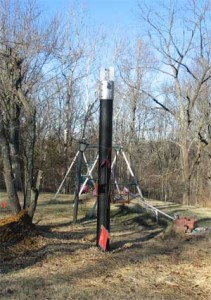Solar Power (part 6)
 (continued from part 5)
(continued from part 5)
We’re still waiting for some insurance details to be cleared up. But at least finally the people from SCI-REMC, our electric utility, were here to do an inspection and a test run of the system. A nice, warm day (for January) enabled Alex and me to swing the mount to its proper angle of 45 degrees. Now, that really looks imposing. The people on my street finally know what’s happening.

It was very sunny that day and on the test run the inverter showed close to 1100 watts. That’s pretty close to maximum. I plan to keep track of electricity production once our system is officially running. The panels were pretty dusty since the ice, sleet and snow of the past two weeks weren’t able to slide off while the assembly was horizontal. Unfortunately the garden hose was still frozen so I couldn’t clean them.

We did get a new electricity meter. Pretty cool one. When we moved into the house in 1995 they still had to come to the meter, read the numbers and write them down. Then, a few years ago they installed a new meter which sends the reading wirelessly to the person driving by with a truck. This new meter sends its data through the power lines. It will measure how much electricity goes INTO the house as well as how much my PV system generates back into the grid. That probably isn’t a lot most of the time. It cycles through these five modes:
1. Kw – REMC delivered energy in 30 day billing cycle.
2. Kw – Peak or total consumer used kW over the last 15 minute period.
3. Kw – total energy consumer generated back onto REMC’s grid.
4. Kw – peak demand during peak period.
5. Kw – consumer generated energy back to the grid during peak period.
Plenty of numbers to be able to analyze how this will be working out.
I hope to be able to keep you updated on our status.
